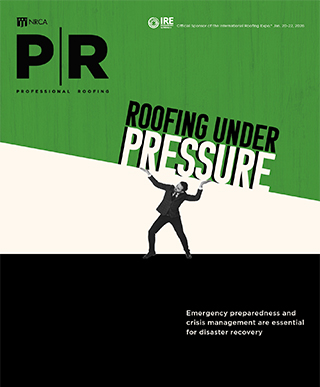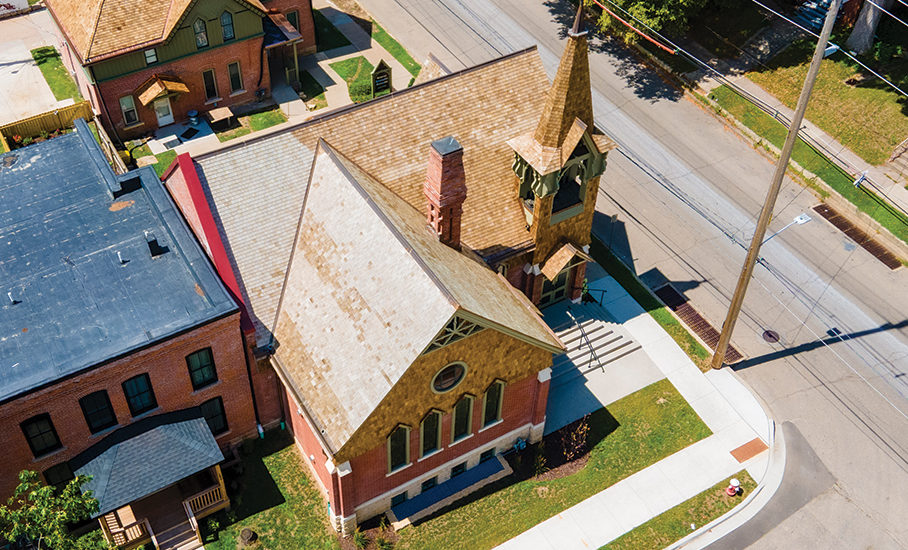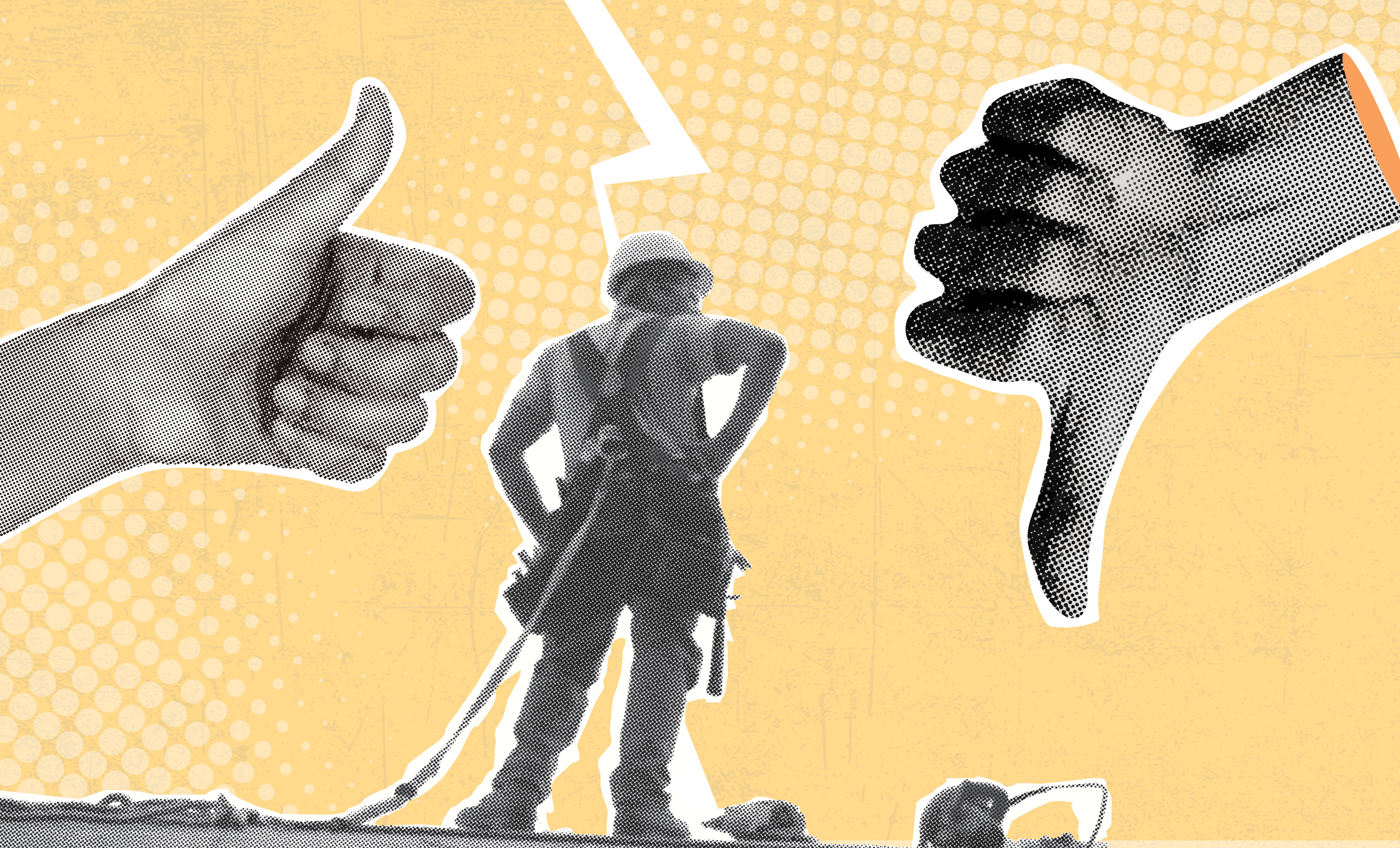
From 2006 to 2021, there were 444 deaths nationwide caused by lightning, and 18% of those were characterized as on-the-job incidents, according to the Centers for Disease Control and Prevention. Roofing work is specifically listed among high-risk outdoor trades by the CDC and National Lightning Safety Council, which includes roofing in its “deadly dozen.” According to the National Lightning Safety Council, roofing is the sixth deadliest activity.
In addition, the National Safety Council reports 50% of all construction site injuries are related to slips, trips and falls from heights—hazards roofing workers face daily. Severe weather events compound this risk: In 2024, the National Oceanic and Atmospheric Administration recorded more than 18,000 severe storm reports affecting construction projects nationwide. Of these, dozens involved roofing sites that led to evacuations, injuries and/or property losses.
Roofing workers operate in high-risk environments where emergencies and crises can arise unexpectedly. Proper emergency response and crisis management are crucial to roofing companies and preparing for both scenarios will help your company and workers successfully navigate any emergency or crisis.
Emergency response
Emergency response refers to the immediate actions taken during an incident to protect lives and property. Emergency response focuses on swift, on-site actions during an incident. In roofing, this could mean responding to immediate dangers such as worker accidents, sudden severe weather or fires on a job site. The primary goal is to ensure safety and limit damage in the moment.
As soon as an emergency occurs, rapid action often is needed to mitigate the incident, and roofing crews must be prepared to act. Some common emergencies in the roofing industry include:
- Medical events: Falls from roofs or scaffolds, tool accidents, heart attacks or electrocutions all require immediate response. Crews should be prepared to handle personal medical emergencies and work-related injuries, which require planning and training in rescue, first aid and contacting emergency services. Prompt emergency medical response can make a significant difference in cases involving serious injury. For example, Occupational Safety and Health Administration fatality data shows dozens of roofing workers lose their lives each year from falls, so having a practiced procedure for fall emergencies with the right equipment on-site is important to consider before a fall occurs.
- Severe weather events: Roofing workers are exposed to the elements. Sudden thunderstorms, high winds, hail and tornadoes can create an emergency on a roof. Severe weather emergency response means getting workers to safety and quickly securing a worksite. Having a plan to protect the work area from water damage, securing loose materials and equipment and getting to a safe location is imperative. Crew members need to know when and how to shift from conducting construction work to emergency mode where they work to protect themselves, the people around them and the work area, always prioritizing human life.
- Fires on the roof: Roofing operations (torch applications, for example) can carry a fire risk. If a fire ignites, the roofing crew must be prepared to recognize and respond. This includes recognizing the signs of fire in the early stages, how and when to use a fire extinguisher, having a plan to alert crews and building occupants if there is a need to evacuate, and knowing when and how to contact the fire department. Fires can spread rapidly, so containment in the first moments is vital. Roofing crews often are required to maintain a “fire watch” after performing hot work; this involves someone who is trained to recognize and react to potential flare-ups. Measures like these are part of emergency response preparedness that includes training and advance planning to prevent a disaster when a potential fire (smoke or smoldering) is noticed.
OSHA regulations mandate a fire extinguisher be immediately available during hot work such as roofing torch operations that present a higher risk of fire, underscoring the importance of preparedness in emergency response. The priority is always human life followed by immediate hazard control in these situations.
OSHA also requires employers to maintain a written emergency action plan under 29 CFR 1910.38 (general industry) and 29 CFR 1926.35 (construction). The plan should outline the procedures and designated actions employees must take for foreseeable emergencies such as fires, falls or severe weather.
For example, your company’s plan should detail evacuation routes, how to shut down equipment, who is responsible for calling emergency services and where your crew should assemble after evacuating. All crew members should be trained in these procedures so they know exactly what to do when an alarm sounds or an accident happens. Having a robust emergency action procedure is more than a paperwork exercise—it’s a lifesaving blueprint that guides employees, avoiding confusion when seconds count. A solid emergency action plan includes the following:
- Risk assessment: Identify specific hazards at job sites. Understanding the unique dangers of each project will guide your planning efforts.
- Roles and responsibilities: Assign clear duties to crew members. Consider who calls emergency responders, leads evacuations and coordinates response.
- Communication plan: Establish reliable methods for alerting workers and contacting emergency services that everyone understands. Language should never be a barrier in an emergency—make sure your communication tools meet the multilingual needs of your employees. Consider tools such as alarms and radios while working on-site. Additionally, think through procedures for contacting family members in an emergency situation.
- Evacuation procedures: Clearly marked exits, assembly points and routes save time when it matters most. Training crew members can be as simple as regular walk-throughs on a job site that may change throughout the project. Ladder access, egress points and building penthouse access should be visible and pre-determined.
- Medical response: Be detailed in the steps for treating injuries as clarity can save lives. Equipping sites with easily accessible first-aid kits and ensuring crews are trained to recognize medical situations and respond appropriately on every shift can greatly increase the likelihood of a successful response in an emergency medical situation.
- Training and drills: Regular practice instills confidence, ensuring your team knows how to respond in a real emergency. Making emergency drills a routine part of your schedule is imperative as practice makes the procedures instinctive when seconds count.
A well-executed emergency response aims to minimize injury and damage in the moment.
Actions taken in the first few minutes of an incident are what an emergency response is all about. Emergency responses are inherently reactive; it’s the reflexive execution of emergency plans and training when an incident erupts.
Need additional resources?
There are a variety of sources for safety information:
- Visit nrca.net/safety for more information specific to the roofing industry.
- NRCA’s Fall-protection Trainer Course for Roofing is a great resource for learning and establishing procedures for fall emergencies. And NRCA’s CERTA program can help roofing crews learn how to mitigate the fire risk associated with torch-applied roofing operations. Both courses are available at nrca.net/education.
- NRCA toolbox talks, available at shop.nrca.net, offer additional safety tips for workers.
- The Occupational Safety and Health Administration offers step-by-step guidance about emergency planning and creating an emergency action plan at osha.gov. OSHA’s detailed emergency action plan, eTool, guides users through requirements and best practices for developing and implementing a workplace-specific emergency action plan.
- In addition, the ready.gov website managed by the Federal Emergency Management Agency provides toolkits and printable guides to help businesses prepare for natural and manmade emergencies.
If you have questions about workplace emergency planning or crisis management, contact Adrianne D. Anglin, CSP, NRCA’s director of safety and risk management, at aanglin@nrca.net or (847) 493-7536.
Crisis management
Crisis management is a broader process that addresses the wider fallout and ensures a business survives an incident. Emergency response ends when the immediate danger is controlled.
Crisis management involves strategies and actions to handle the ongoing effects of a serious incident that may threaten an organization’s reputation, legal standing, operations and financial health. Key aspects of crisis management include protecting the business and reputation, mitigating long-term effects, and team structure and planning.
Protecting the business and reputation
Unlike emergency response that focuses on safety in the moment, crisis management focuses on a company’s viability and public image in the aftermath. For example, if your roofing company experiences a fatal accident or serious OSHA violation, it not only faces the tragedy of the event but also potential reputational damage, liability and loss of trust from clients.
Crisis management aims to contain such long-term consequences. In practice, this means your company needs to plan for how to respond publicly and organizationally after an incident. This could involve public statements, handling news media inquiries, communicating with clients about project delays, or demonstrating compassion and responsibility within the organization itself after an incident.
Crisis management includes owning the narrative and considering the optics of a situation; an open, timely response can prevent rumors and help to maintain trust.
Mitigating long-term effects
Crises in roofing can stem from the same events that trigger emergency responses, but they also extend into issues such as lawsuits, regulatory penalties, loss of business or community outrage. Crisis management addresses these extended effects.
For instance, if a roofing worker is severely injured or killed, the emergency response might be contacting an ambulance and notifying OSHA the day of the accident. Crisis management is what follows: cooperating with OSHA investigations, possibly facing citations or fines, communicating with the employee and/or their family, dealing with legal actions or insurance claims, and reassuring other employees and clients that work can continue safely.
Having a crisis management plan in place before such an event is key in these situations. Trying to figure out a plan in the middle of a crisis is too late. Instead, prepare a framework in advance so your company knows who will handle the various aspects in the middle of a crisis as well as in the aftermath of an emergency. This may include designating a company spokesperson to handle press inquiries, having legal counsel ready to advise and a protocol for internal communication and support after a traumatic incident.
A strong crisis management approach can mean the difference between a one-time incident your company overcomes versus an incident that permanently cripples the business.
Team structure and planning
Effective crisis management is proactive. It happens before, during and after a crisis. You should create a crisis management team and provide a written plan in advance so team members know their roles and responsibilities during a crisis. Crisis management teams typically include senior management, safety officers, legal counsel and communications personnel with each member having a role.
For example, the safety manager may be assigned with gathering facts about the incident; the attorney may be handling regulators and liability issues; and the spokesperson crafts messages to employees, clients and media. By planning roles and communication channels ahead of time, your company can respond cohesively when something occurs.
Key aspects of a crisis management plan include:
- Risk assessment: Identify which crises are most likely for your company. You might highlight falls, severe storm impacts, fires or customer disputes as your risks.
- Response procedures: Establish easy-to-follow checklists for different scenarios and have template statements ready. Creating crisis communication templates, such as drafted press releases or customer inquiry responses, allows an organization to respond quickly with accurate information.
- Training and drills: Just as crews drill for emergencies, management teams can benefit from simulated crises. Conducting mock media interviews or talking through a mock response with your team can reveal gaps in the plan and build confidence within the team. Regularly reviewing the plan, at least annually, can help keep contact lists and procedures fresh.
- Communication strategy: Deciding when and how to communicate is key. An organization must balance transparency with legal considerations. Consistent messaging helps control the narrative. It’s also important to determine how you will communicate with employees, key clients and even the public if necessary. Often, a company will start with a timely communication to prevent rumors and follow up with more details if needed.
A strong crisis management approach can mean the difference between a one-time incident your company overcomes versus an incident that permanently cripples the business. Planning for a crisis can reduce downtime, preserve your good reputation and help your roofing company emerge from a disaster more resilient. In an industry where trust is vital and word-of-mouth and reputation often determine success, crisis management planning is essential.
Next steps
Preparedness is not a one-time task, it’s an ongoing commitment that should be woven into the foundation of your company. Start by updating your current plans or creating ones tailored to your work. Assign a leader to oversee planning and implementation and ensure equipment and procedures are up to date. Invest in comprehensive training for your team, emphasizing practical, scenario-based sessions that solidify knowledge and confidence. Equipping your employees with the right tools and keeping communication channels open can make a difference in an emergency.
By prioritizing preparedness, you can protect lives, property and your reputation.

ADRIANNE D. ANGLIN, CSP
Director of safety and risk management
NRCA



